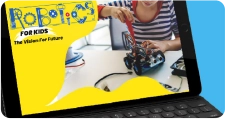

Arpana
Benefits of Integrating Practical Learning with School Education
Theoretical vs Practical? Passive vs Active? Tacit vs Explicit?
Which one to choose from? What is best for our child’s future? Shall we combine school learning with practical learning? This has long been a subject of debate among parents and it has intensified in the last few decades, thanks to the technological revolution. Automation and robots have thronged the job market and parents are often torn between the two paradigms, wondering how likely their child will survive the onslaught of the technology.
Automation guarantees an increase in economic growth and higher productivity at a lower cost because machines outperform and outsmart humans in several areas, including areas requiring cognitive capabilities. The threat is getting bigger with continuous research and innovations in robotics, artificial intelligence, and machine learning sectors. What adds to the parents’ woes are the latest trend reports. According to a report by research firm Forrester titled Predictions 2020: Automation, over one million knowledge-work jobs will be replaced in 2020 by software robotics, RPA, virtual agents and chatbots, and machine-learning-based decision management. Such reports translate into worries and pressure for both – parents and children. Now more than ever, it has become important to integrate school learning with practical learning.
Folks from STEAM (Science, Technology, Engineering, Art, and Math) background may find it easier to assess the challenges and decisions, but not everyone is so lucky. It is mind-boggling for those unfamiliar with STEAM learning and automation.
A famous proverb sums up the importance of practical learning.
Tell me and I forget, teach me and I may remember, involve me and I learn: Benjamin Franklin
The World Economic Forum report may further clear the web of doubts. It says complex problem solving, critical thinking, creativity, people management, and coordinating with others are the top five must-have skills to survive in 2020. Imagine what it would be like a decade from now?
The idea here is not to press the panic button but to assist parents in adopting a better approach to choose smarter learning techniques for their children. First, understanding the trend and analysing the future market is the need of the hour and second, combining academics with relevant skills to ensure higher chances of survival of kids in the future job market.
If you want your children to move on from users of technology to innovators, practical learning is a must, especially for those pursuing STEAM subjects. Also known as experiential learning, it allows students to develop knowledge and skills from direct experiences
Here we will share the benefits of integrating practical learning with school education:
Clarity with Experience: Learning by doing help in remembering the steps better and also creates room to experiment and clear doubts. For instance, oral instructions from a swimming coach won’t make you a swimmer. Rather, practical learning in the water, and practicing every day how to float, how to fine-tune breathing rhythms, how to kick and pull, etc, will make you perform better. The same goes for integrating academics and practical learning. It is hands-on learning outside the traditional academic setting.
Perfection with Practice: Practice makes perfect! So, if you practice swimming every day, you will slowly and steadily inch towards perfection by fine-tuning your skills. By juxtaposing theoretical learning with practical learning, you will allow children to enhance their knowledge quotient and strengthen their reasoning power. This, in turn, will give them an edge in higher education and the job market as well. Children from experiential learning come with the knowledge of underlying principles and how to apply them in processes and procedures to yield the best results.
Problem Solving: Problem solving is a unique way of learning. Students acquire the ability to solve unknown problems or apply problem-solving techniques through practical learning. This is the first step towards innovating something. Most of us have heard of the proverb: “Necessity is the mother of invention,” and to invent, you have to be in the thick of things to come up with solutions. Innovation is all about exploring and discovering. Obstacles encourage resolving the issues through an innovative thinking approach in real-time.
Knowledge Retention: It has been proven that practice helps in long-term knowledge retention. For instance, children working with microcontrollers like Arduino and microcomputers like Raspberry Pi would have a better understanding as compared to those with theoretical knowledge. Practical learning also means experimenting with ideas.
Acquiring Professional Skills: Learning by doing help in building professional skills, which can be advantageous during college admissions and in the job market. This is because these days organizations prefer candidates with experience in solving real-world problems in real-time as they come with the ability to apply knowledge and problem-solving attitude.
In the current competitive scenario, schools must integrate new learning techniques to help prepare children for the future workplace. If the scope of practical learning is thin at schools, you can choose from a plethora of online platforms or join clubs offering experiential learning opportunities.










